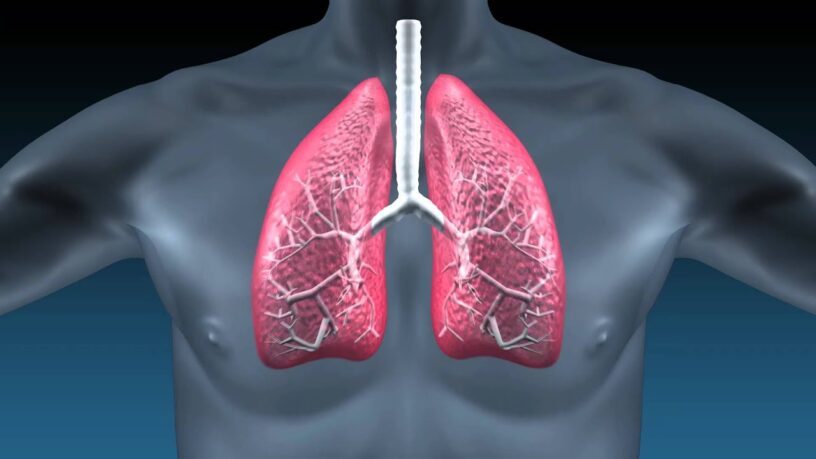Idiopathic Pulmonary Fibrosis Market size was valued at USD 3.54 Billion in 2022 and is poised to grow from USD 3.78 Billion in 2023 to USD 6.45 Billion by 2031, growing at a CAGR of 6.9% in the forecast period (2024-2031).
Idiopathic Pulmonary Fibrosis (IPF) is a progressive lung disease characterized by scarring (fibrosis) of the lung tissue, which leads to a decline in lung function over time. The exact cause of IPF is unknown, making it idiopathic. The disease often affects older adults and has a poor prognosis, with a median survival of three to five years after diagnosis. Treatment options are limited, but recent advancements in drug therapies have significantly impacted patient outcomes.
Market Size and Growth
- Market Size: The global IPF market was valued at approximately USD 3 billion in 2023.
- Growth Rate (CAGR): The market is projected to grow at a CAGR of 8-10% from 2023 to 2030, driven by rising awareness, advances in treatment options, and an increasing patient population.
Key Drivers
- Rising Incidence of IPF:
- The increasing prevalence of IPF, particularly among the aging population, is a major driver of market growth. Factors such as smoking, environmental exposures, and genetic predisposition contribute to the rise in cases.
- Advancements in Drug Therapies:
- The introduction of antifibrotic agents such as pirfenidone (Esbriet) and nintedanib (Ofev) has transformed the management of IPF. These drugs slow disease progression and improve quality of life for patients, driving demand for effective treatment options.
- Increased Awareness and Early Diagnosis:
- Growing awareness of IPF among healthcare providers and patients has led to improved diagnostic methods, enabling earlier detection and treatment. Enhanced diagnostic tools, such as high-resolution computed tomography (HRCT), aid in identifying IPF at earlier stages.
- Investment in Research and Development:
- Ongoing research into novel therapeutic targets and drug candidates for IPF is expected to result in the introduction of new treatment options. Companies are focusing on developing combination therapies and exploring the potential of biologics in managing IPF.
- Support from Patient Advocacy Groups:
- Organizations advocating for IPF awareness and funding research initiatives contribute to increased awareness, education, and resources for patients and healthcare providers, positively impacting the market.
Market Segmentation
- By Treatment Type:
- Antifibrotic Agents: Medications like pirfenidone and nintedanib dominate the market due to their efficacy in slowing disease progression.
- Corticosteroids: While not primarily indicated for IPF, corticosteroids may be used in some cases to manage inflammation.
- Oxygen Therapy: Patients with advanced disease may require supplemental oxygen to manage hypoxemia.
- Lung Transplantation: In severe cases, lung transplantation is considered a treatment option for eligible patients.
- By Stage of Disease:
- Early Stage: Patients with mild symptoms may receive monitoring and antifibrotic therapy to slow disease progression.
- Moderate Stage: Patients may require more intensive management, including medication and supportive therapies.
- Advanced Stage: Patients may be candidates for lung transplantation or palliative care.
- By Distribution Channel:
- Hospital Pharmacies: A significant portion of IPF treatments is dispensed through hospitals due to the need for specialized care and monitoring.
- Retail Pharmacies: Outpatient prescriptions for antifibrotic agents are commonly filled at retail pharmacies.
- Online Pharmacies: The use of online pharmacies is increasing as patients seek convenient access to medications.
- By Region:
- North America: The largest market, driven by high healthcare expenditure, advanced healthcare infrastructure, and a growing patient population.
- Europe: Significant market growth due to increasing awareness and the availability of treatment options.
- Asia-Pacific: Rapidly growing region due to improving healthcare infrastructure, rising healthcare expenditure, and increasing incidence of IPF.
- Latin America, Middle East, and Africa: Emerging markets with rising awareness and improving access to treatment options.
Key Trends
- Development of Combination Therapies:
- Researchers are exploring combination therapies involving antifibrotic agents, immunosuppressants, and biologics to enhance treatment efficacy for IPF patients.
- Focus on Personalized Medicine:
- Increasing emphasis on personalized approaches to treatment, targeting specific molecular pathways in IPF to improve outcomes for individual patients.
- Technological Advancements in Diagnosis:
- Advancements in imaging techniques and biomarkers are enhancing the early detection and diagnosis of IPF, leading to timely treatment initiation.
- Regenerative Medicine Approaches:
- Research into stem cell therapies and tissue engineering is underway, aiming to develop innovative treatment strategies for IPF.
Challenges
- Limited Treatment Options:
- Despite recent advancements, treatment options for IPF remain limited, and the current therapies primarily focus on symptom management and slowing disease progression rather than curing the disease.
- High Cost of Antifibrotic Agents:
- The high cost of antifibrotic medications can be a barrier to access for many patients, particularly in low- and middle-income countries.
- Adverse Effects of Treatments:
- Antifibrotic agents can have side effects, including gastrointestinal issues and liver function abnormalities, which may deter some patients from adherence to therapy.
- Awareness and Education Gaps:
- There are still gaps in awareness and understanding of IPF among healthcare providers and patients, leading to delays in diagnosis and treatment.
Future Outlook
The idiopathic pulmonary fibrosis market is expected to grow steadily as new therapies emerge, and awareness of the disease increases. Continued investment in research and development, coupled with advancements in diagnostic techniques, will likely improve patient outcomes and drive market growth. Overcoming challenges related to treatment access and affordability will be crucial for maximizing the potential of this market.
Get Free Exclusive PDF Sample Copy of This Research Report https://stringentdatalytics.com/sample-request/idiopathic-pulmonary-fibrosis-market/14278/
Market Segmentations:
Global Idiopathic Pulmonary Fibrosis Market: By Company
MediciNova
Boehringer Ingelheim
Hoffmann-La Roche
FibroGen
Promedior
Merck
Galapagos
Prometic Life Sciences
Cipla
Global Idiopathic Pulmonary Fibrosis Market: By Type
Systemic Corticosteroids
Immunosuppressant Drugs
Tyrosine Kinase Inhibitors
Antifibrotic Agents
Global Idiopathic Pulmonary Fibrosis Market: By Application
Hospitals
Clinics
Ambulatory Surgical Centers
Academic and Research Organizations
Global Idiopathic Pulmonary Fibrosis Market: Regional Analysis
The regional analysis of the global Idiopathic Pulmonary Fibrosis market provides insights into the market’s performance across different regions of the world. The analysis is based on recent and future trends and includes market forecast for the prediction period. The countries covered in the regional analysis of the Idiopathic Pulmonary Fibrosis market report are as follows:
North America: The North America region includes the U.S., Canada, and Mexico. The U.S. is the largest market for Cold-chain Pharma in this region, followed by Canada and Mexico. The market growth in this region is primarily driven by the presence of key market players and the increasing demand for the product.
Europe: The Europe region includes Germany, France, U.K., Russia, Italy, Spain, Turkey, Netherlands, Switzerland, Belgium, and Rest of Europe. Germany is the largest market for Cold-chain Pharma in this region, followed by the U.K. and France. The market growth in this region is driven by the increasing demand for the product in the automotive and aerospace sectors.
Asia-Pacific: The Asia-Pacific region includes Singapore, Malaysia, Australia, Thailand, Indonesia, Philippines, China, Japan, India, South Korea, and Rest of Asia-Pacific. China is the largest market for Cold-chain Pharma in this region, followed by Japan and India. The market growth in this region is driven by the increasing adoption of the product in various end-use industries, such as automotive, aerospace, and construction.
Middle East and Africa: The Middle East and Africa region includes Saudi Arabia, U.A.E, South Africa, Egypt, Israel, and Rest of Middle East and Africa. The market growth in this region is driven by the increasing demand for the product in the aerospace and defense sectors.
South America: The South America region includes Argentina, Brazil, and Rest of South America. Brazil is the largest market for Cold-chain Pharma in this region, followed by Argentina. The market growth in this region is primarily driven by the increasing demand for the product in the automotive sector.
Click Here, To Buy Premium Report https://stringentdatalytics.com/purchase/idiopathic-pulmonary-fibrosis-market/14278/?license=single
Key Indicators Analysed
Market Players & Competitor Analysis: The report covers the key players of the industry including Company Profile, Product Specifications, Production Capacity/Sales, Revenue, Price and Gross Margin 2016-2027 & Sales with a thorough analysis of the market’s competitive landscape and detailed information on vendors and comprehensive details of factors that will challenge the growth of major market vendors.
Global and Regional Market Analysis: The report includes Global & Regional market status and outlook 2016-2027. Further the report provides break down details about each region & countries covered in the report. Identifying its sales, sales volume & revenue forecast. With detailed analysis by types and applications.
Market Trends: Market key trends which include Increased Competition and Continuous Innovations.
Opportunities and Drivers: Identifying the Growing Demands and New Technology
Porters Five Force Analysis: The report provides with the state of competition in industry depending on five basic forces: threat of new entrants, bargaining power of suppliers, bargaining power of buyers, threat of substitute products or services, and existing industry rivalry
About Stringent Datalytics
Stringent Datalytics offers both custom and syndicated market research reports. Custom market research reports are tailored to a specific client’s needs and requirements. These reports provide unique insights into a particular industry or market segment and can help businesses make informed decisions about their strategies and operations.
Syndicated market research reports, on the other hand, are pre-existing reports that are available for purchase by multiple clients. These reports are often produced on a regular basis, such as annually or quarterly, and cover a broad range of industries and market segments. Syndicated reports provide clients with insights into industry trends, market sizes, and competitive landscapes. By offering both custom and syndicated reports, Stringent Datalytics can provide clients with a range of market research solutions that can be customized to their specific needs.
Contact Us
Stringent Datalytics
Contact No- +1 346 666 6655
Email Id- sales@stringentdatalytics.com
Web- https://stringentdatalytics.com/




Leave a Reply